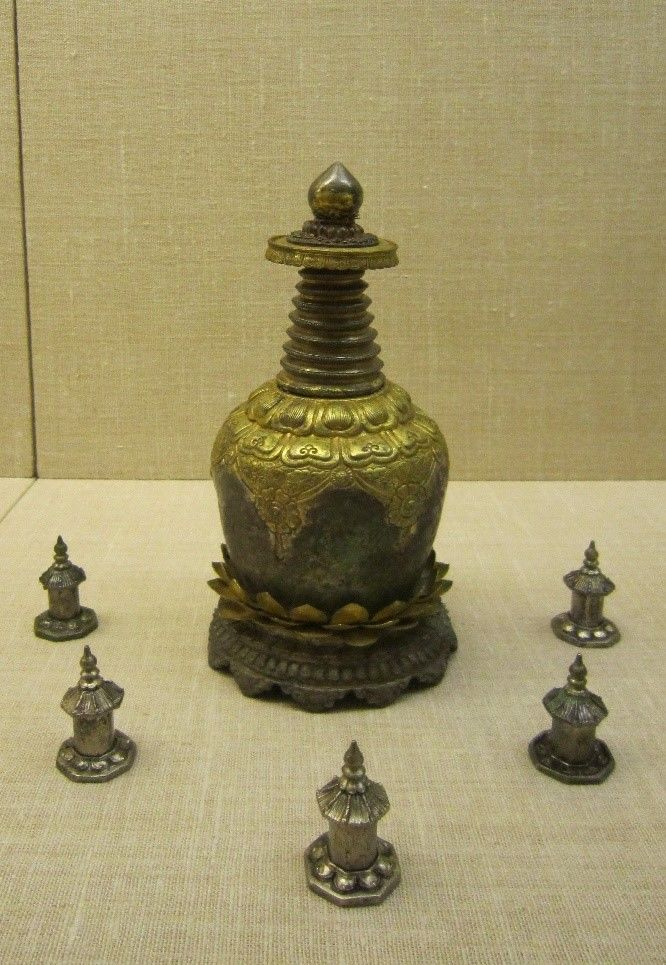Talks on Goryeo artifact's repatriation resume a decade later
By Kim Hae-yeonPublished : Nov. 7, 2023 - 15:15

Discussions on the return to Korea of the silver-gilt Lamaistic pagoda-shaped sarira reliquary dating back to the 13th century in the Goryeo era, which is currently on exhibition at the Museum of Fine Arts, Boston, are set to resume, 10 years after the previous talks fell through.
Hyemun, a former Buddhist monk and the leader of a non-profit civic group dedicated to repatriating cultural heritage, emphasized the need to restart discussions and focus on bringing the sarira back to Korea, in a phone interview with The Korea Herald on Tuesday.
"Because of the (Cultural Heritage Administration's) refusal in 2009, we have to (start talks) again from zero, and ask for the sarira to be returned, which could have been done earlier," Hyemun said.
On Monday, Hyemun issued a press release announcing that he had set up a meeting with the Museum of Fine Arts, Boston, on Tuesday to negotiate the relic's return. He said he had been in talks with the museum for several months.
Efforts to repatriate the artifact began in 2003, according to the Cultural Heritage Administration. In 2009, the museum inquired as to whether South Korea would accept only the sarira without the reliquary. The CHA responded that it would not consider receiving the sarira separately, as the reliquary and the sarira together hold cultural significance.
When asked about whether the return of the sarira with the reliquary was important, Hyemun said that repatriation requires a step-by-step approach, and that the reliquary's return is not currently under consideration, given the failed discussions a decade ago. "It is a religious artifact before a cultural artifact, and I do not believe it is desirable in such a case for the government to dictate how and in what form Buddhist relics should be returned."
Meanwhile, the CHA told The Korea Herald on Tuesday that talks resumed in late April, after a visit by South Korean first lady Kim Keon Hee to the museum.
On April 28, Kim toured the museum during a state visit to the US with President Yoon Suk Yeol and requested that discussions be reinitiated for the artifact's return. The museum's director, Matthew Teitelbaum, said he would discuss the matter with relevant agencies.
"We are still in the process of negotiating for the two components to be brought back as a complete ... since it will make it much harder to bring back the reliquary (if) the sarira is brought back to the country first," a CHA official told The Korea Herald, adding that they are also collaborating with the Foreign Ministry in discussing the artifact's repatriation with the museum.
The Boston museum acquired the piece in 1939 through a Japanese art dealer named Yamanaka. It is unclear, however, how Yamanaka obtained the artifact in the first place. The CHA head explained that the issue of the artifact's return should be approached carefully since studies have not confirmed the artifact as having been stolen or smuggled out of Korea.







![[Weekender] How DDP emerged as an icon of Seoul](http://res.heraldm.com/phpwas/restmb_idxmake.php?idx=644&simg=/content/image/2024/04/25/20240425050915_0.jpg&u=)


![[KH Explains] No more 'Michael' at Kakao Games](http://res.heraldm.com/phpwas/restmb_idxmake.php?idx=644&simg=/content/image/2024/04/28/20240428050183_0.jpg&u=20240428180321)








![[Herald Interview] Mistakes turn into blessings in street performance, director says](http://res.heraldm.com/phpwas/restmb_idxmake.php?idx=652&simg=/content/image/2024/04/28/20240428050150_0.jpg&u=20240428174656)
